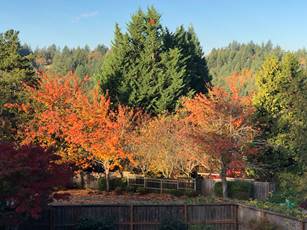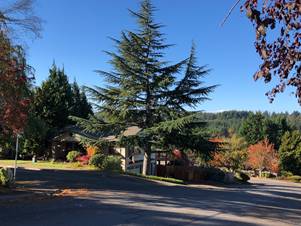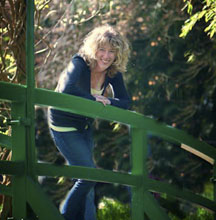Six National Parks in Seven Weeks
plus a peculiar national monument and a polygamous cult town
Like a lot of people, we crammed in a bunch of national parks visits this year, some as make-up trips we’d cancelled in 2020 at the outset of the pandemic. I didn’t journal these travels but pulled old emails and Facebook posts from our three separate journeys and consolidated them into this story.

GRAND TETONS
On our way to Tetons and Yellowstone, we attended a funeral in the mountains of Idaho for my dear Aunt Verley.
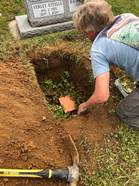
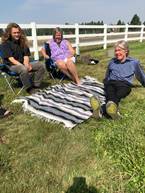
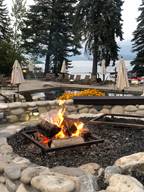
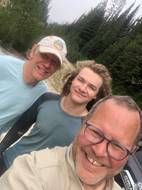
We had to dig her grave ourselves for her box of ashes at the little Finnish cemetery outside McCall. My cousin brought along her own shovel for the job; they do things differently in Idaho. We had a tiny, touching service with singing, prayer and family stories. Construction diverted traffic from the main highway towards the cemetery alongside Farm to Market Road. We drew perplexed looks from passing motorists at our growing mound of earth amongst the headstones.
In Jackson, Wyoming, we stopped at Albertsons to fill our two ice chests from home, having heard about the restaurant crisis at Yellowstone. TripAdvisor reviewers suggested hauling in your own food, so we purchased a variety of deli salads, sandwiches, fruit, yogurt, chips, crackers and beverages for our stay.
We hiked in the Tetons and snapped my favorite photo of a cowgirl just outside the park who clearly wanted to remain incognito. The dates: August 29 and 30.
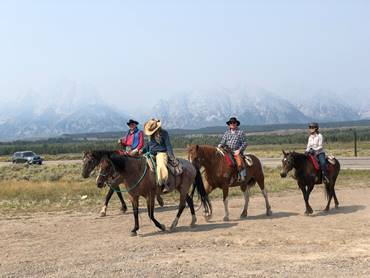
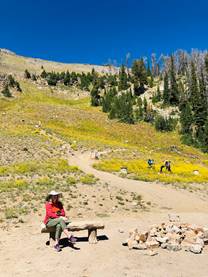
Later I learned that on August 29th, Brian Laundrie hitch-hiked at least two different rides along this same road as he travelled alone from his crime-scene campsite to Jackson. We are reminded why we never pick up hitch-hikers.
YELLOWSTONE
At Lake Yellowstone Hotel, we had no wifi, refrigerator, and essentially no housekeeping service (they make your bed every four days but don’t touch the towels or anything else). But for the first time at Yellowstone, I could hook my computer up to a low-grade ethernet cord while overlooking the water which appeared more ocean than lake.
Jim left to explore. I told him to please avoid the grizzlies that apparently had started a late-summer prowl on the surrounding trails.
We saw dozens of bison but no bears, except we probably came closer to some grizzlies than we’d have liked. Park rangers roped off the sides of the highway for a half mile stretch where bears climbed from Lake Yellowstone across the road and back. They also posted large electronic signs warning motorists to not walk, stop or exit their cars in this zone.
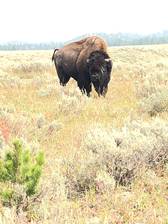
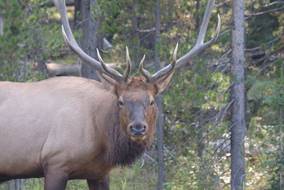

But a line of cars directly ahead of us did exactly this, parking squarely in the middle of their lanes for several minutes. People jumped from their vehicles and chased after bears with cameras and manic grins. We rolled up our windows and wondered what kind of carnage we might witness while trapped behind them.
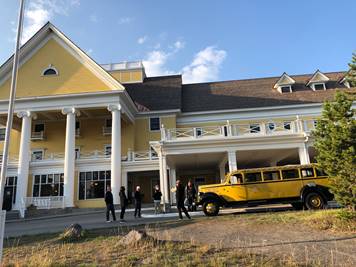
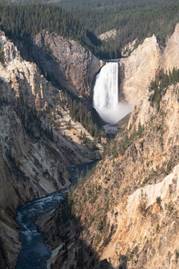
Not much ever changes at Yellowstone except this year Covid prevented their usual underpaid foreign workers from coming—college aged students from places like the Czech Republic or Iceland, willing to work for peanuts for the privilege of the Yellowstone experience. The park concessionaires had to shut down most food vendors over a month earlier, leaving just options of:
1. Re-heated mac & cheese and spaghetti, slung by future lunch ladies.
2. Slightly better buffets at the hotels but with long lines and $30 per person.
3. Gas station-quality pre-packaged overpriced pastries
Jim and I happily worked our way through our food stash, replacing our ice from the machine down the hall twice a day. We didn’t spend a penny on food all Yellowstone week, which also marked my longest span without coffee since 1982.
An irate bison aborted our final hike at east Yellowstone. Returning trekkers reported that a testy beast had just charged a hiker ahead, but he’d moved off the path, so we should be fine, they figured—just keep an eye out. We continued until we ran into three young men racing towards us, warning of the bison immediately on their tracks. I spotted the big guy lumbering after them at a good clip, and we knew bison could run. We reversed course. Jim expressed disappointment but I assured him that this made a much better story which is my usual bottom line anyway.
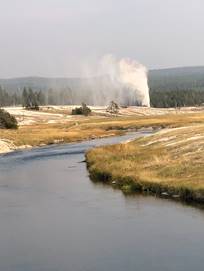
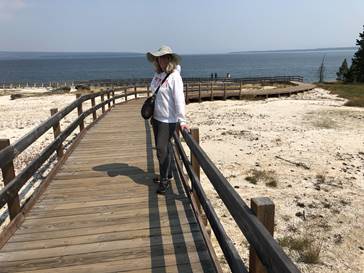
Afterwards we stopped at a remote park store that miraculously offered scooped ice cream for sale despite closure of their entire fountain cafe. A young woman and a 70-something lady named Nancy manned the ice cream stand, Nancy more than likely stepping in to help during the staff shortage crisis. The younger gal filled our cones while I whispered to Jim that we were paying for food inside Yellowstone after all. Alas, Nancy accidentally jammed the cash register. Her youthful co-worker couldn’t reopen it. She waved us on with our free ice cream, saying “you’re good.” We kept our non-payment food streak intact.
COLORADO CITY, ARIZONA / HILDALE, UTAH
Though not a national park or monument, our journey took us smack through this infamous FLDS (Fundamentalist Latter Day Saints) town so of course I had to check it out. This sister-city full of sister-wives on the border of Arizona and Colorado collectively goes by the name Short Creek, but it’s best known as the heart of a branch of polygamous Mormons lead by the now-incarcerated Warren Jeffs.
Three years ago, poking around Short Creek would have earned outsiders a tailing by multiple white SUVs with tinted windows. Warren’s personal “God Squad” police enforcement understood and practiced intimidation well.
Warren reportedly has 87 wives but his real crimes go much deeper with offenses like assigning child brides for himself and his most dutiful disciples. You can read all about his horrors on the internet and in a bunch of books, many of them autobiographical stories about young women escaping the cult after becoming wife #5 at age 14.
The FBI placed Warren on its most wanted list in 2006; two months later police captured him on a routine traffic stop. In his red Cadillac Escalade, authorities discovered 16 cell phones, wigs and other disguises, $55,000 cash, and favorite wife Naomie.
Warren got a sentence of life plus 20 years in prison, but he continued preaching to his faithful from penitentiary by video tape. In 2011, he prophesied his imminent return to Short Creek. His people just had to build him a massive house in preparation, Warren explained, promising that God would reward their obedience with his release from prison. Believers constructed the residence in less than 90 days at great personal expense and sacrifice. Warren remains in the prison big house today while never having spent a single night in his own big house.
One FLDS follower named Willie Jessop served as Warren’s body guard but over time grew increasingly disgusted at his abuses. When Jessop refused to publicly defend Warren’s behavior, Warren excommunicated him, expelling him from his home and family. In 2013, Jessop bought Warren’s foreclosed house and turned it into “America’s Most Wanted Suites and Bed & Breakfast,” a jab at his former boss’s stint on the FBI’s fugitive list.
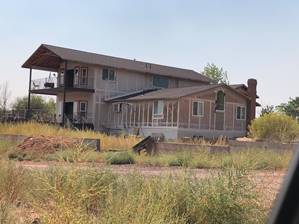
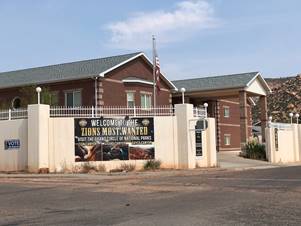
The hotel came with foot-thick interior walls, solid doors so heavy they required extra hinges, 15-foot-tall cement fencing, and inexplicably, 1980s decor and fixtures. Thick, ice-blue carpet, hand-picked by Warren, wicks halfway up the walls like wainscoting.
Most, but not all, of the hotel guests know the history of the place. Jessop once guided an English couple through the premises while telling the sordid backstory. The Brits made no comment, but at the conclusion of their tour, they grabbed their bags and bolted from the B & B.
Today Warren has largely lost his stranglehold on the community. We encountered no God Squad members while we circled the old church meeting hall, the hotel, and the rambling, ramshackle polygamous homes.
An ex-FLDS woman now serves as mayor, children have returned to public school, and a brew pub opened down the lane. But at the local grocery store, I spied a woman in a tell-tale pastel prairie dress. (Warren banned his townspeople from using or wearing the color red.) She’d styled her hair into an elaborate braid in the back. Up front, she rocked a pompadour wave--the higher, the more righteous, Warren taught.
I texted our Annie and Anna and described Short Creek in real time as we explored its streets. They’d both read the same polygamous escape books as I had, so I knew they could easily track along. And they did, even more so than I’d anticipated.
Concerned for our safety, daughter-in-law Anna had one question for us: “Are you wearing red?”
PIPE SPRINGS MONUMENT
When Taylor started 6th grade, he came home from school excited about his choice of research project of a major site in the southwest. Bypassing places like Arches and Zion, he selected Pipe Springs National Monument. “I got the best. It’s going to be so cool,” he said.
We learned how native Americans utilized the natural springs in this desolate desert location until Mormon pioneers discovered it and built a fort directly over the main water source. When Utah outlawed polygamy, fundamentalist Mormons regularly sent wives #2 or 3 to Pipe Springs to hide from the law, especially if they were pregnant, turning the place into something of a FLDS birthing center.
For Taylor’s class speech, we minimized the FLDS aspect of the story, instead focusing on the springs. Taylor mimicked the bubbling springs, squeezing water into my yellow mixing bowl from an old plastic 7-up bottle. He got an A.
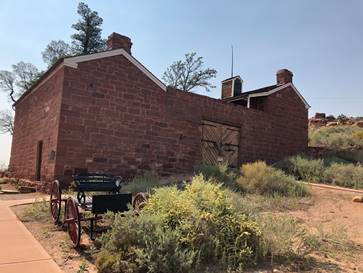
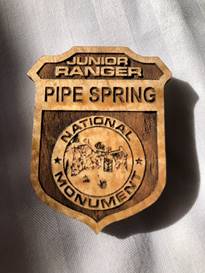
I’d forgotten about Pipe Springs for nearly two decades until we travelled across the middle of nowhere Arizona on our way to the North Rim Grand Canyon. I spotted the sign. It couldn’t be, I thought. It was.
I told the park ranger my story about Taylor and she handed me their wooden junior ranger badge to give him. Somehow Taylor doesn’t seem that interested in the badge so I’m trying to reimagine it as an accessory for my personal wardrobe.
NORTH RIM GRAND CANYON
My brother James asked me which park I preferred of the six. North Rim, I answered, to his surprise.
The orange, yellow and red hues of the surrounding aspen trees trumped anything we saw all season, including Acadia National Park in New England. The forest, cabins, and general vibe reminded me of Camp Silver Creek growing up. It even smelled like that in the very best of ways, and my sniffer challenges those of Labrador Retrievers. Plus North Rim kept the dining room open and served actual good food.
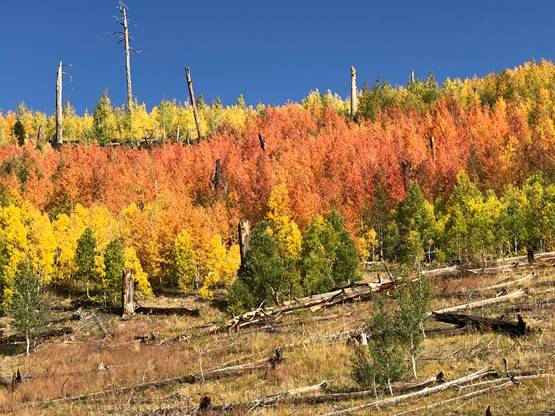
Our only real challenge at North Rim involved the altitude. At about 8,500 feet, any uphill climbing gassed us out. Jim took me on one supposedly easy hike that somehow diverted onto something opposite and I temporarily transformed into an unhappy camper. We determined you don’t really need to descend into the Grand Canyon to experience it, especially at 8,500 feet.
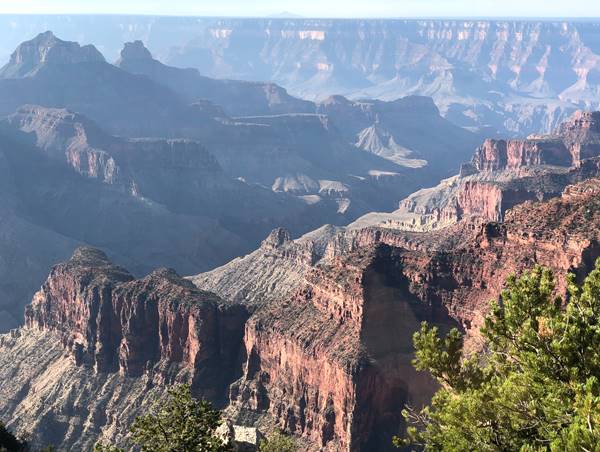
Everything felt quieter at North Rim, and it wasn’t just due to the light crowds. The air seemed to absorb sound such that voices and vehicle noises carried only short distances, wrapping us in a muffled cocoon. We wondered if it involved the altitude. I could find no park rangers at the visitor’s center to ask, and the concessionaire staff had zero idea.
I'm not sure if it was due to budget cuts, crowding, or Covid, but we first noticed this lack of rangers at North Rim: No fireside talks or guided hikes for us there. The rangers were probably too busy keeping visitors from killing themselves or others to offer as much education as they’d like.
One day staff set up a table outside with a sign, "Ask a Ranger a Question, 3 PM.” I planned to ask the ranger about the sound at North Rim, but a line had already formed by 2:30.
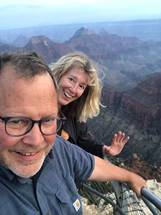
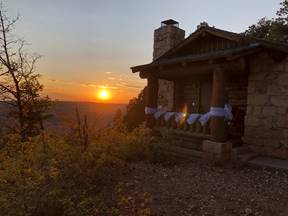
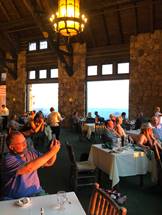
BRYCE CANYON
The early Mormon church sent Ebenezer Bryce, his wife and twelve children to establish the first white community in this canyon area later named for him. Ebenezer reportedly didn’t care much for the canyon, calling it a “helluva place to lose a cow.”

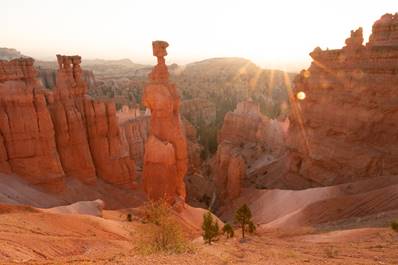
We rented a house in the nearby Mormon town of Tropic that came with a washer and dryer and a coffee shop down the road that overflowed with caffeine-seekers each morning.
Bryce Canyon provided our favorite hike of the trip: Navaho Loop with its Wall Street section. Unlike the Grand Canyon, you need to traverse deep into the red fins for the full effect. My Artist James and his camera went nuts over these vermilion rocks. But as we hiked down, down, down, we remained fully aware that what goes down must later hike back up. Slowly up, but totally worth it.
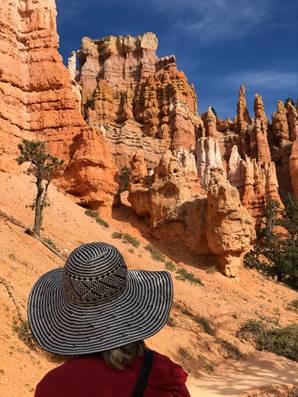

ZION
My hyper-meticulous trip planning scored us a lodge room inside Zion, granting us the super-secret gate code which allowed us to bypass the shuttles and drive directly into the middle of the park. Somehow it felt sorta wrong, but it totally wasn’t.
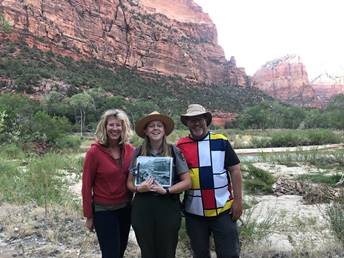
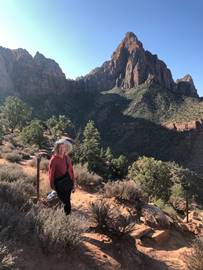
Guided tour buses deposited scores of seniors outside the lodge and soon these lanyard-wearers packed the dozens of porch rocking chairs to gaze at the rusting sandstone cliffs. Deeper in the canyon, ant-like processions of hikers descended upon the famous Narrows River walk. We scrapped our original plans to navigate the rocky creek after weighing the potential for hip fracture.
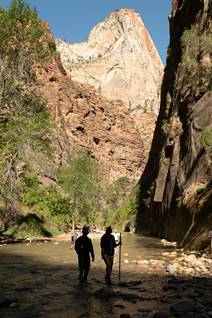
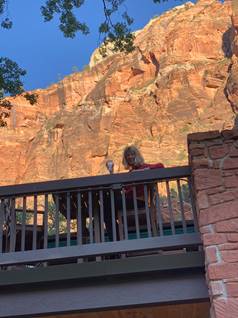
Once 5 pm hit, the masses cleared and we had the park and occasional ranger largely to ourselves. Ranger Grace took us on a twilight four-person guided hike alongside but not in the river.
ACADIA
Why Acadia?
- We were already on the east coast visiting our kids in New York City.
- For years people told Artist James he needed to capture the fall colors of New England.
- If not now, when?
Where’s Acadia?
On the central coast of Maine, sticking up into the Canada-lands.
Acadia reminded us of Oregon in multiple ways. Combine the autumn leaves of Salem’s Minto-Brown Park with the drama of Depoe Bay’s Devil’s Punchbowl with the hills and waterways of Detroit and you have Acadia. Just use the word “wicked” to describe something cold and never add an R to the name Acadia and you’ll fit right in.
In Maine, you eat lobster rolls instead of Dungeness crab cakes.
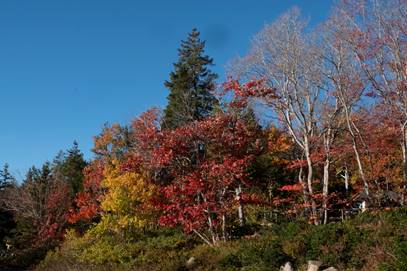

What’s a lobster roll?
Take today’s catch, toss it with some mayo, slap it atop lettuce on a lightly toasted piece of white bread and fold it over, hot dog style. Find it anywhere in Maine at any type of restaurant any time. We purchased our tastiest lobster rolls at a humble shack in a small town grocery store parking lot.
You’ll encounter lots more vacationers in New England than in the Pacific Northwest, situated near major east coast populations as it is. Turns out that Acadia is one of the smallest national parks but one of the most visited. The west coast benefited park-wise from getting settled later, allowing time for exceptional lands to get preserved for the common good. If Niagara Falls existed someplace like Montana it would probably be a national park today.
Acadia’s lands originally served as summer cottage (i.e. manor) retreats for families with names like DuPont, Pulitzer, Bouvier, and Rockefeller. Rockefeller lead the way in donating properties for designated park land, as well as personally financing its carriage roads and stone bridges.
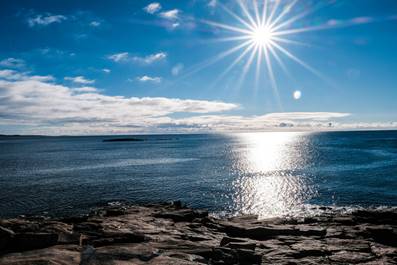
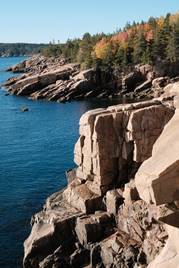
Despite many local businesses and park attractions already having closed for the season in late October, we had to arrive at Acadia by 8 AM on weekdays to secure a parking spot. To drive up for sunrise at Cadillac Mountain, the tallest point of the park, visitors have to reserve an online slot two days prior at exactly 10:00 AM. By 10:01, no slots remain.
We tried but failed to get a time until hours after sunrise, when even then arctic gales and temperatures altered our tire pressures which lit up our dashboard red warning light and froze my ears which also turned red and I couldn’t handle more than five minutes up there. I got a feel for Maine winters atop Cadillac Mountain.
At Acadia’s Jordan Pond, we miraculously scored a late-day table at the Jordan House Restaurant to sample their iconic turnovers. Jim ordered an $18 lobster stew that presented as lobster broth. We kindly pointed out the lack of fish to our waitress and she answered, “Oh, that’s how we do it here.” My cup of lobster chowder had at least a few pieces of something floaty which I scooped into Jim’s bowl so he could pretend he had food. Then two extra turnovers magically appeared at our table and all was well except for the absence of jam.
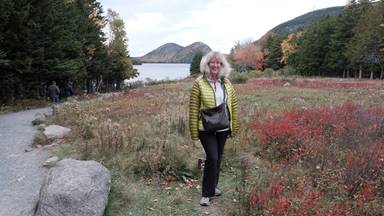
We stayed at the small town of Bar Harbor outside Acadia, where tourists still swarmed in late October. They don’t have city parks but instead “village greens” complete with gazebos and you wonder if you’ve stumbled upon the set of Gilmore Girls. We ended up enjoying Bar Harbor and other New England fishing towns more than the park itself.
We planned to eat at Jeanne’s Great Maine Breakfast in Bar Harbor, but the crowds out front convinced Jim he needed to drop me off while he parked so I could get on the no-doubt terrible waiting list. I quickly hopped from the car as a pick-up truck behind blared his horn at me. I glanced back and the driver raised his arms with a look like, “What did you expect?”
My fellow breakfast-porch-people rallied around me saying, “Wow, such road rage!” and “He must be from New York!” The host informed me of the hour wait, and despite my new friends-in-restaurant-solidarity, Jim and I found lobster omelets elsewhere that were still pretty great but just not at Jeanne’s.
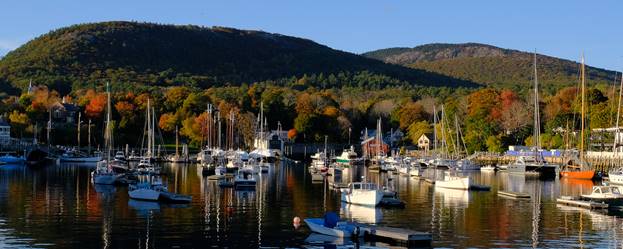
PORTLAND, MAINE to PORTLAND, OREGON
The last city on our docket was Portland, Maine, a place of curiosity after having lived in or near the other Portland most of my life. When I checked with a Delta agent about this flight, she questioned my Portland to Portland itinerary, assuming I’d misspoken.
Differences between the two Portlands:
Maine Oregon
1. Population 60,000 600,000
2. Port Ocean bay Rivers
3. Inches snow/year 61 2.6
4. Lobster for lunch Why Not Affected
We liked Portland, Maine more than expected with its leafy old brick buildings and a vibrancy that belied its size. As everywhere east of the Cascade Mountains, we saw not a single homeless person. On our final day in Maine we lunched on lobster rolls one last time.
Flying to Oregon, we had a revelation: though our state boasts only one national park, we get to live in that level of awe and beauty all around us, all the time. Driving home up our hill, the scarlet trees alone just about knocked me out. Like Dorothy and her ruby slippers, we’ve had the magic at our feet all along.
